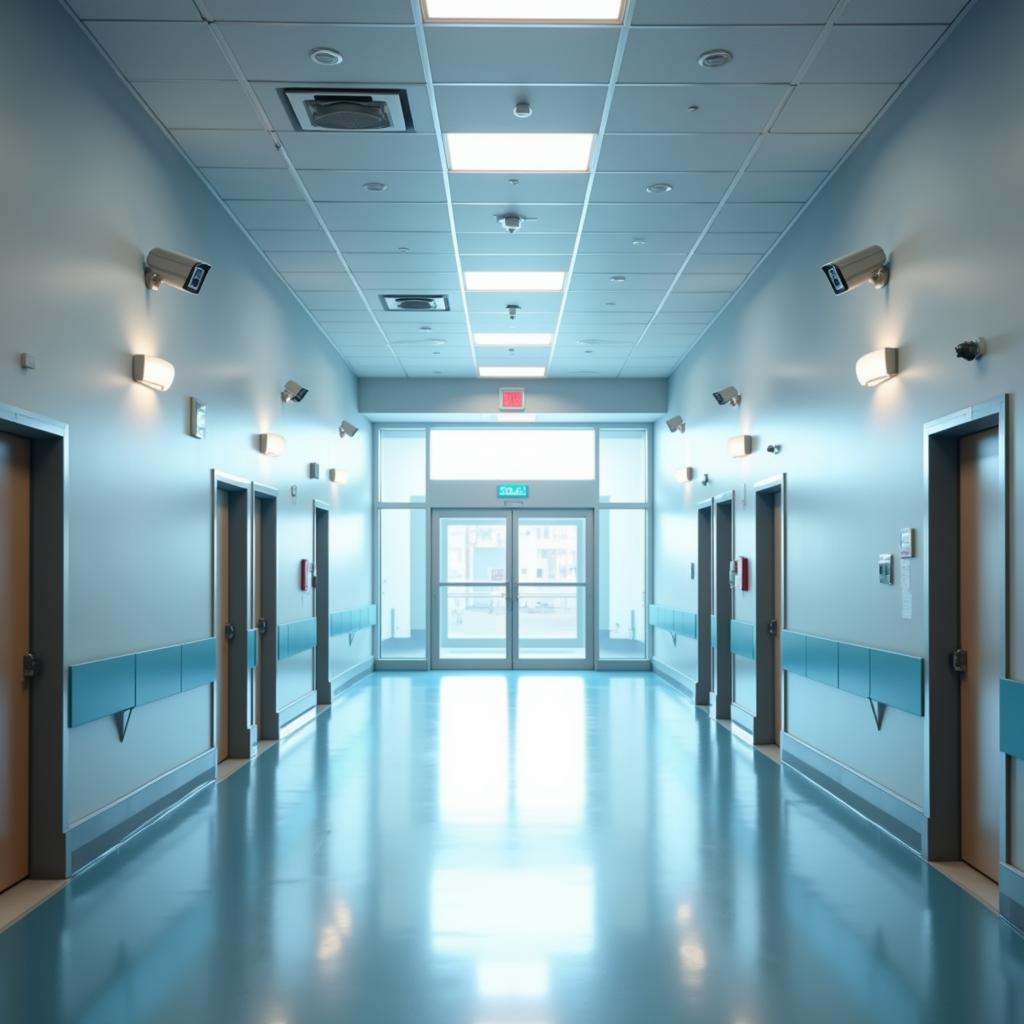Hospital Cameras play a crucial role in ensuring the safety and security of patients, staff, and visitors. These systems provide a watchful eye throughout the facility, deterring crime and providing valuable evidence in case of an incident. From monitoring high-risk areas to safeguarding sensitive equipment, hospital cameras are essential for maintaining a secure and trustworthy healthcare environment.
Understanding the Need for Hospital Cameras
 Hospital security system control room
Hospital security system control room
The healthcare industry faces unique security challenges due to the presence of vulnerable patients, sensitive medical information, and valuable equipment. Hospital cameras provide a proactive approach to mitigating these risks by:
- Deterring Criminal Activity: The visible presence of surveillance cameras acts as a deterrent to potential criminals, discouraging theft, vandalism, and other illegal activities.
- Providing Evidence: In case of an incident, hospital cameras can provide valuable footage to assist law enforcement in investigations, identify perpetrators, and resolve disputes.
- Improving Patient Safety: Cameras in patient rooms and common areas can help monitor patient well-being, prevent falls, and ensure a quick response to medical emergencies.
- Monitoring Staff Performance: Cameras can be used discreetly to monitor staff performance, ensure adherence to protocols, and identify areas for improvement in patient care.
- Protecting Assets: Hospitals house expensive medical equipment and sensitive data. Hospital cameras help safeguard these assets by deterring theft and providing evidence in case of loss or damage.
Types of Hospital Cameras and Their Applications
Hospitals utilize a variety of camera systems, each designed for specific purposes:
1. Fixed Cameras:
These cameras offer a continuous view of a specific area, such as entrances, exits, hallways, and parking lots. They are ideal for monitoring high-traffic areas and deterring unauthorized access.
2. Pan-Tilt-Zoom (PTZ) Cameras:
PTZ cameras provide remote-controlled pan, tilt, and zoom functionality, allowing security personnel to focus on specific areas of interest. These cameras are often used in large open spaces like waiting rooms and lobbies.
3. Dome Cameras:
Dome cameras are discreet and vandal-resistant, making them suitable for indoor areas where aesthetics and durability are important. Their design makes it difficult to determine the camera’s viewing direction, enhancing their effectiveness.
4. Thermal Cameras:
These cameras detect heat signatures, allowing them to see in complete darkness or through smoke and fog. Thermal cameras are valuable for perimeter security, detecting intruders, and monitoring patients at night without disturbing their sleep.
 Modern hospital corridor equipped with security cameras
Modern hospital corridor equipped with security cameras
Ethical Considerations and Privacy Concerns
While hospital cameras offer significant security benefits, it’s crucial to address ethical considerations and privacy concerns:
- Patient Consent: Hospitals must obtain informed consent from patients before using cameras in areas where they have a reasonable expectation of privacy, such as exam rooms and restrooms.
- Data Security: Hospitals must implement robust cybersecurity measures to protect camera footage from unauthorized access, breaches, and misuse.
- Transparency: Hospitals should have clear policies regarding camera usage, data retention, and access procedures, ensuring transparency with patients and staff.
Key Features of Effective Hospital Camera Systems
When choosing hospital cameras, consider these essential features:
- High Resolution: Cameras should capture clear, detailed images even in low light conditions.
- Wide Dynamic Range (WDR): WDR technology ensures optimal image quality in areas with varying light levels, such as entrances and exits.
- Motion Detection: Cameras equipped with motion detection can trigger alerts or recordings when movement is detected within a designated area.
- Video Analytics: Advanced video analytics can identify suspicious behavior, track objects, and provide valuable insights for security management.
- Integration with Other Systems: Seamless integration with access control systems, alarm systems, and other security infrastructure enhances overall security.
The Future of Hospital Security: AI and Beyond
As technology advances, artificial intelligence (AI) is poised to revolutionize hospital security. AI-powered cameras can analyze video footage in real time, detect anomalies, and alert security personnel to potential threats. AI can also assist with facial recognition, crowd monitoring, and other advanced security applications.
Conclusion
Hospital cameras are indispensable for creating a safe and secure environment for patients, staff, and visitors. By embracing advanced technologies and prioritizing ethical considerations, hospitals can leverage the power of surveillance systems to enhance security, protect assets, and foster a sense of trust and well-being within their facilities. If you have any questions or need support, please contact us at Phone Number: 02437655121, Email: [email protected]. Or visit us at: No. 298 Cau Dien Street, Minh Khai, Bac Tu Liem, Hanoi, Vietnam. We have a 24/7 customer support team.